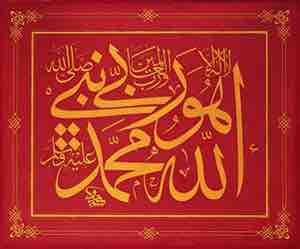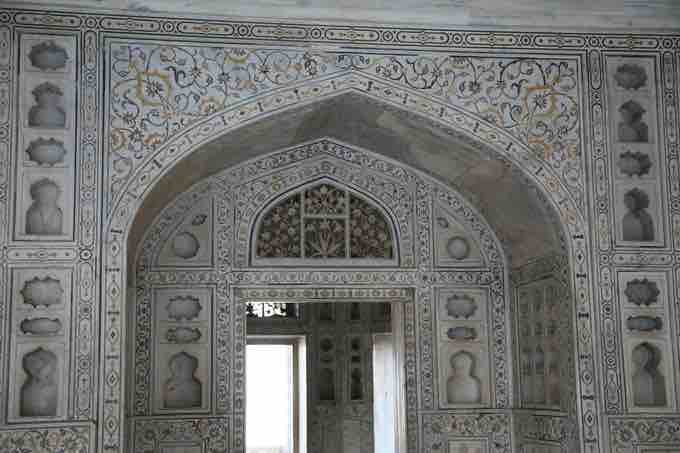Islam
Islam is a monotheistic and Abrahamic religion articulated by the Qur'an, a book considered by its adherents to be the verbatim word of God (Allah) and the teachings of Muhammad, who is considered to be the last prophet of God. An adherent of Islam is called a Muslim. Most Muslims are of two denominations: Sunni (75–90%),[7] or Shia (10–20%). Religious concepts and practices include the five pillars of Islam, which are basic concepts and obligatory acts of worship, and following Islamic law, which touches on virtually every aspect of life and society. The five pillars include:
- Shahadah (belief or confession of faith)
- Salat (worship in the form of prayer)
- Sawm Ramadan (fasting during the month of Ramadan)
- Zakat (alms or charitable giving)
- Hajj (the pilgrimage to Mecca at least once in a lifetime)
Islamic Art
Islamic art encompasses visual arts produced from the seventh century onward by both Muslims and non-Muslims who lived within the territory that was inhabited by, or ruled by, culturally Islamic populations. It is thus a very difficult art to define because it spans some 1400 years, covering many lands and populations. This art is also not of a specific religion, time, place, or single medium. Instead Islamic art covers a range of artistic fields including architecture, calligraphy, painting, glass, ceramics, and textiles, among others.
Islamic art is not restricted to religious art, but instead includes all of the art of the rich and varied cultures of Islamic societies. It frequently includes secular elements and elements that are forbidden by some Islamic theologians. Islamic religious art differs greatly from Christian religious art traditions. Because figural representations are generally considered to be forbidden in Islam, the word takes on religious meaning in art as seen in the tradition of calligraphic inscriptions. Calligraphy and the decoration of manuscript Qu'rans is an important aspect of Islamic art as the word takes on religious and artistic significance. Islamic architecture, such as mosques and palatial gardens of paradise, are also embedded with religious significance. While examples of Islamic figurative painting do exist, and may cover religious scenes, these examples are typically from secular contexts, such as the walls of palaces or illuminated books of poetry. Other religious art, such as glass mosque lamps, Girih tiles, woodwork, and carpets usually demonstrate the same style and motifs as contemporary secular art, although they exhibit more prominent religious inscriptions.

A Calligraphic Panel by Mustafa Râkim (late 18th - early 19th century) which reads: "God, there is no god but He, the Lord of His prophet Muhammad (peace be upon him) and the Lord of all that has been created"
Islamic art has focused on the depiction of patterns and Arabic calligraphy, rather than on figures, because it is feared by many Muslims that the depiction of the human form is idolatry.
Islamic art was influenced by Greek, Roman, early Christian, and Byzantine art styles, as well as the Sassanian art of pre-Islamic Persia. Central Asian styles were brought in with various nomadic incursions; and Chinese influences had a formative effect on Islamic painting, pottery, and textiles.
Themes of Islamic Art
There are repeating elements in Islamic art, such as the use of stylized, geometrical floral or vegetal designs in a repetition known as the arabesque . The arabesque in Islamic art is often used to symbolize the transcendent, indivisible and infinite nature of God. Some scholars believe that mistakes in repetitions may be intentionally introduced as a show of humility by artists who believe only God can produce perfection.

Arabesque Inlays at the Mughal Agra Fort, India
Geometrical designs in repetition, know as Arabesque, are used in Islamic art to symbolize the transcendent, indivisible, and infinite nature of God.
Typically, though not entirely, Islamic art has focused on the depiction of patterns and Arabic calligraphy, rather than human or animal figures, because it is believed by many Muslims that the depiction of the human form is idolatry and thereby a sin against God, forbidden in the Qur'an. However, depictions of the human form and animals can be found in all eras of Islamic secular art. Depictions of the human form in art intended for the purpose of worship is considered idolatry and is forbidden in Islamic law, known as Sharia law.